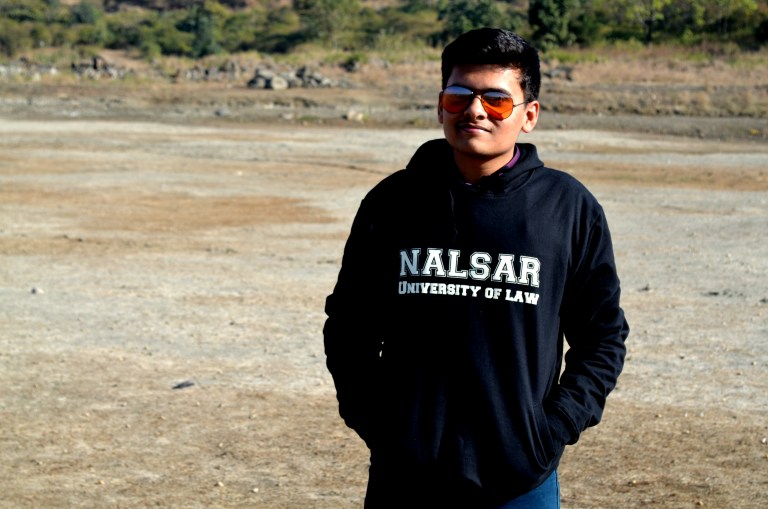In this blog post, Abhiraj Thakur, a 1st-year student of NALSAR University of Law, writes about intellectual property rights in the arena of video gaming. Though there are international laws in place to protect the interests of gamers, some issues still exist. In the case of India, the situation becomes bleaker as the current IPR laws of the country are not the most reliable when it comes to games. Also, a video-game demands much more safeguards than an ordinary intellectual work plus the gaming industry is on a constant boom; it thus becomes necessary to examine the status of IPR in video game industry.
Video Games Today
 A majority of us must have come across video games at some point in time in our life. Living in the digital age marked by spurring developments in graphic generation technology one can hardly stay immune from video games. Today, video games have become one of the prime choices of children of all age groups, and the markets are flooded with all sorts of games targeting children of various age groups. These games today are not only confined to young minds, in fact going by the available stats, about 28 percent of game players are in the world are below 18 years of age, whereas 32 percent of game players are 36-plus years[1]. Video games are no longer just a popular medium of entertainment among teenagers but even for adults.
A majority of us must have come across video games at some point in time in our life. Living in the digital age marked by spurring developments in graphic generation technology one can hardly stay immune from video games. Today, video games have become one of the prime choices of children of all age groups, and the markets are flooded with all sorts of games targeting children of various age groups. These games today are not only confined to young minds, in fact going by the available stats, about 28 percent of game players are in the world are below 18 years of age, whereas 32 percent of game players are 36-plus years[1]. Video games are no longer just a popular medium of entertainment among teenagers but even for adults.
None of us would have ever given a thought on what it takes to make these games. The video games of today contain highly dynamic audio-visual elements, including high definition pictures, video recordings and sounds and complex software, which technically manages the audio-visual elements and permits users to interact with the different elements of the game. These elements demand specialized skill and research and often result in new discoveries and advancements in the current technology. As a result of this, there arise perplexing issues of authorship of these new techniques, and Intellectual property claims are made. The makers of these games consider the output to be ‘pure works made by skilled application of knowledge, imagination, and ideas’, and so it ought to be protected by law.
International Scenario of IPR in Gaming
The Berne Convention for the Protection of Literary and Artistic Works, usually known as the Berne Convention of 1886 is current the international law that provides protection to video games. Article 2 of the Convention in its expression of “literary and artistic work” accords protection to video games by way of copyright. However the current issue stands on the fact that “Is a video game only a literary and Artistic work?” Prima facie the answer seemed to be in negative. Let’s consider a simple example with a classic game known to all, Call of Duty. At its most basic, where should the inventor company Activision demand copyright in:
- The game codes are a literary work;
- The display is a graphic work; and
- The tunes are a musical work
Today’s gaming world include 3D universes loaded with symbols, sensible models and surfaces, exchange, music, verses, cut-scenes, and so forth. Possibly numerous more copyright licenses should be tended to in the generation of a contemporary amusement.
 The different innovative components in a specific video game speak to various types of IP rights. For instance: patent law covers matters, for example, amusement play plan components, systems administration or configuration database; trademark law ensures organization names, diversion titles or sub-titles; and copyright subsists in works, for example, music, characters or code. Therefore, video games serve a pertinent field for IP Rights.
The different innovative components in a specific video game speak to various types of IP rights. For instance: patent law covers matters, for example, amusement play plan components, systems administration or configuration database; trademark law ensures organization names, diversion titles or sub-titles; and copyright subsists in works, for example, music, characters or code. Therefore, video games serve a pertinent field for IP Rights.
- Trademarks in Games: The first and clearest utilization of trademarks in games are the names and logos connected with the diversion, the distributor, and the engineer. Usually, distributors and engineers will have enlisted their organization name and logo and even mark sound example as trademarks, whereby these are included inside the diversion in sprinkle screens amid the amusement’s presentation. The particular characters, spots, and weapons are additionally the subjects of a trademark; sometimes these are authorized from other excitement properties.
- Licenses in Games: Applied calculations, Display presentation, and Menu plan and so on. However, Patents are the minimum known IPR to the diversion business and normally held as the most costly and much of the time superfluous IPR. They unquestionably are the most disputable. Licenses keep going for around 20 years, contingent on the purview. Some once-lucrative licenses covering base processing advancements, for example, side-looking over or utilization of compatible ROM cartridges have slipped by into the general population area. Regardless, 20 years is quite a while in amusement advancement, and some innovation or calculation created five years back for which licenses were conceded just a year ago may stay substantial and usable for the following 10 to 15 years. In incline times or for a trustee designer on the procurement trail, enforceable licenses that are encroached present noteworthy open doors.
- Trade Secret in Games: Trade Secret would apply when designers don’t discharge their amusement and resource source code to people in general and take measures to avoid divulgence of this source code to both the general population and contenders. This doesn’t have any significant bearing to open source diversions or those amusements where the source code and representation are effortlessly distinguishable (for instance, on a CD). Prized formula Security recognizes the privilege of an entrepreneur or enterprise to keep business data mystery for reasons for supporting the business or keeping up an upper hand. Competitive innovations may include Source Code, Object Code, Machine and numerous different zones.
The Indian Scenario
The video game industry in India is expected to grow shortly. According to the Indian Media and Entertainment Industry Report 2015, the Indian video game industry recorded a growth of 21 percent and is expected to record a growth of 26 percent by 2017[2]. The Indian video game scenario is growing gradually, with more and more domestic game developers and Indian game titles entering the market. Example:- Chhota Bheem and Krrish Video games. Notwithstanding contrasted with its western partners the Indian gaming industry is still minuscule, yet insights Indicate that it is expanding in size and is relied upon to encounter sound development in future.
Copyright
The Copyright Act of 1957 does not particularly manage the subtleties of video games and the absence of any points of reference or controls in such manner further bothers the vulnerability.
Be that as it may, the demonstration under Section 2(c) characterizes “cinematograph film” as any work of visual recording, on any medium delivered through a procedure from which a moving picture might be created by any methods, and incorporates a sound recording going with such visual recording. “Cinematograph” ought to be translated as Including any work created by any procedure practically equivalent to cinematography including video movies. It Is indeterminate whether ‘process similar to cinematography’ alludes to video games.
Additionally, as far as task and permit rights under the Copyright Act, a video game can be founded on a novel, comic, film or a book and the same should be possible by acquiring a permit from the writers of the first substance. Under the Indian situation, a video game engineer can make its diversion in light of a motion picture or book by securing a business permit from the writers.
Trademarks
On account of video games, trademarks can be utilized for securing the title, sub-titles of the amusement, or the name of characters. For instance, renowned video games, for example, Super Mario and Contra have been effectively enrolled with the Indian IP Office. Along these lines, if such stamps are encroached by a comparable or a misleadingly comparative imprint, then aid can be obtained under Sections 29 and 135 of the demonstration.
Licenses
Patent law can be utilized for ensuring the system code of the amusement. However programming, in essence, is not patentable In India. Additionally, under the Indian Patent Act of 1970, Section 3(m) particularly bars amusement outlines as patentable creations and gives that a simple plan or lead or strategy for performing a mental demonstration or technique for playing a diversion is not patentable. The same was additionally held by the Delhi High Court For the situation of Mattel v Jayant Agarwalla In 2008. [3]
Motion Pictures and Video Games
There are a few motion pictures that have been adjusted for video games. For instance, the motion picture Super Mario Bros was an adjustment of Nintendo video games of the same name. Additionally, there are a couple of video games that have been made in light of motion pictures or books. Dhoom 3 and Sholay, Bullets of Justice depend on well-known Bollywood films Dhoom 3 and Sholay.
While the global video game industry stands at staggering 93 billion dollars[4], The video game industry in India is still a developing one, and Indian developers are entrusted by international publishers with the job of developing games. Outsourcing game development is highly prevalent, and there are very few entities in India that develop their video games. The lack of any specific legislation and precedents for the protection of various elements of video games poses a big challenge for the industry. For an industry that is showing signs of booming for a considerable time to come, having laws specifically dealing with IPR in gaming is desirable for a country like India where there is a large consumer base to tap for gaming manufacturers of the world.
[divider]
Footnotes:
[1] Videogames Revenue Worldwide, Statista Inc., 2012-2015. Available at Http://www.statista.com/statistics/278181/video-games-revenue-worldwide-from-2012-to-2015-by-source/
[2]http://www.mondaq.com/404.asp?action=login&404;http://www.mondaq.com/india/x/380082/Trademark/Intellectual%20Property%20Protection%20For%20Games=
[3] 2008 (153) DLT 548
[4] Mondaq.com/india/Ipr-in-games
 Serato DJ Crack 2025Serato DJ PRO Crack
Serato DJ Crack 2025Serato DJ PRO Crack












 Allow notifications
Allow notifications




[…] [2] https://blog.ipleaders.in/intellectual-property-rights-video-games-industry/. […]